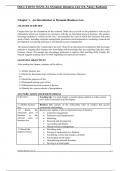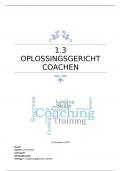Exam (elaborations)
Solutions Manual For Dynamic Business Law, 6th Edition By Nancy Kubasek, Neil Browne, Daniel Herron, Linda Barkacs, Carrie Williamson - Full Chapters
- Course
- Institution
Solutions Manual For Dynamic Business Law, 6th Edition By Nancy Kubasek, Neil Browne, Daniel Herron, Linda Barkacs, Carrie Williamson. Solutions Dynamic Business Law 6e Nancy Kubasek. ISBN: 9781260733976. Kubasek 6e solutions for Dynamic Business Law.
[Show more]





